Croatia
Welcome to Croatia Croatia is a cultural, historical and natural treat for travelers. The vibrant capital city of Zagreb is home to the countries best museums, galleries, restaurants, and shopping. The archeological remains along the coast and inland areas are […]
Welcome to Croatia
Croatia is a cultural, historical and natural treat for travelers. The vibrant capital city of Zagreb is home to the countries best museums, galleries, restaurants, and shopping. The archeological remains along the coast and inland areas are a testament to Croatia’s history, while the coastline with its beaches and resorts are sure to please vacationers looking to just relax.
Croatia’s extraordinary island-speckled coastline is indisputably its main attraction. The first thing that strikes you is the remarkable clarity of the water. When it’s set against a dazzling white pebbly beach, the water sparkles with a jewel-like intensity in shades of emerald and sapphire.
Shift your gaze for just a moment from the glittering waters and chances are an almighty mountain will loom into view. The limestone karst has bequeathed a wonderland of craggy peaks, caverns, river canyons, waterfalls and ridiculously picturesque lakes.
Croatia Highlights

Dubrovnik Old Town Walls
Dubrovnik, Croatia’s most glamorous tourist destination and a UNESCO World Heritage site, centers on the magnificent Old Town area, contained within sturdy medieval defensive walls. The must-see attractions here include the attractive cathedral and the spectacular artifacts in its treasury; the spectacular Square of the Loggia, a historic gathering place famous for its lovely old buildings and monuments; and Fort Lovrijenac, one of the country’s most important fortresses.
Other fun things to do include exploring the Stradun, a wide 300-meter-long pedestrian thoroughfare lined with boutiques, cafés, and restaurants that’s famous for its white limestone cobblestones.

Plitvice Lakes National Park
Croatia’s most visited inland attraction, Plitvice Lakes National Park (Nacionalni park Plitvicka jezera) encompasses steep forested hillsides surrounding 16 emerald-blue lakes connected by a succession of thundering waterfalls. A network of footpaths and wooden bridges crisscrosses the park (the country’s first national park), and the entrance ticket includes boat rides across the lakes. Thanks to the lush pristine nature, the park is a haven for wild animals, including wolves and bears (though they are timid, so you are unlikely to see them) as well as owls, eagles, and falcons.
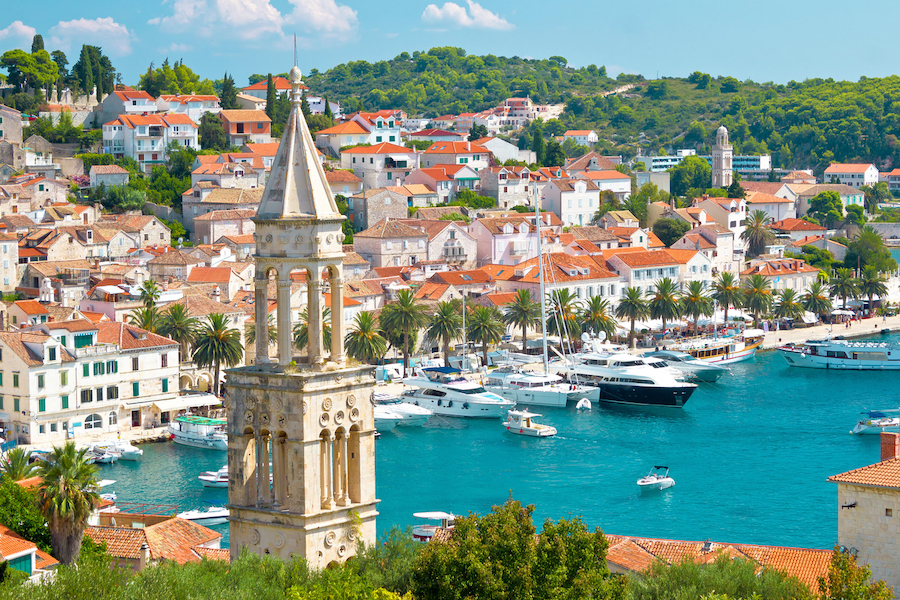
Hvar
Many tourists visit Croatia to explore the blissful Dalmatian islands, of which the most fashionable is Hvar. Its car-free Old Town is made up of a spacious main square overlooked by a 16th-century cathedral, a pretty fishing harbor, and a hilltop fortress. Hvar is popular with yachters and celebrities, as well as travelers who come here to enjoy its beaches and water sports. It is served by ferry from Split.
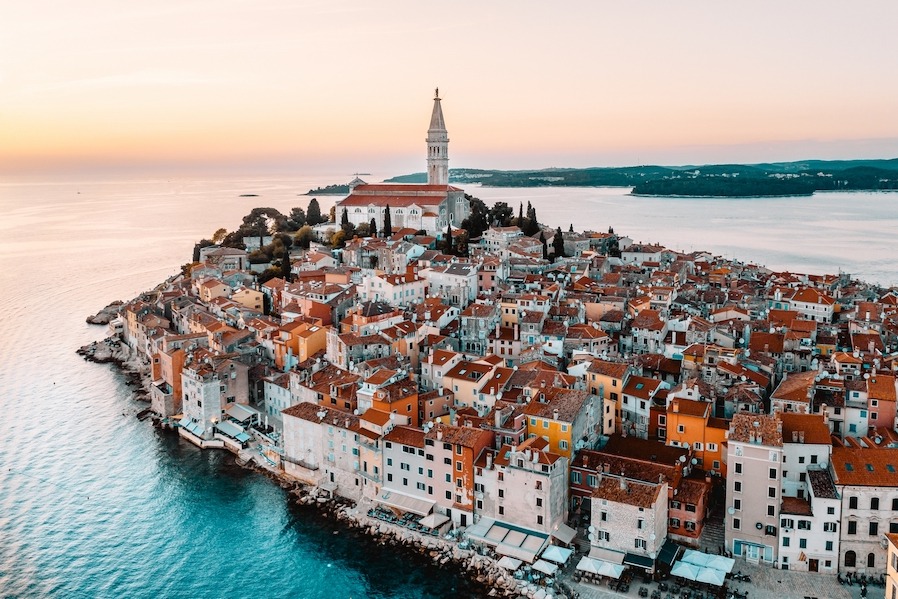
Rovinj
Located in northwest Croatia, on the Istrian peninsula, the Venetian-era seaside town of Rovinj is made up of pastel-colored houses ringing a pretty fishing harbor, and presided over by a hilltop church with an elegant bell tower. Besides the nearby pebble beaches.
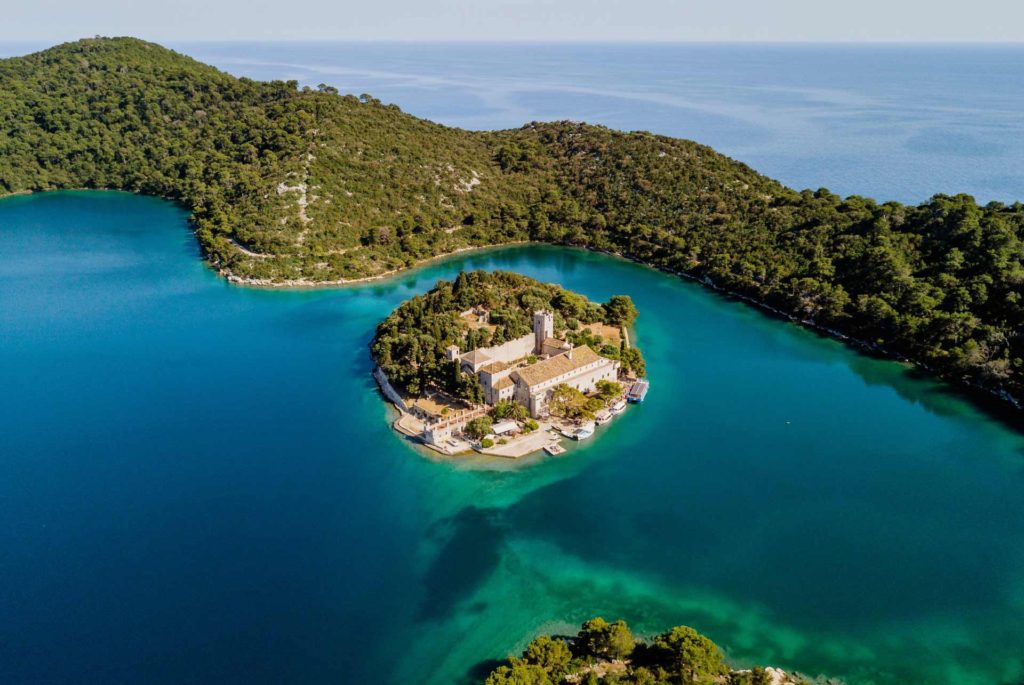
Mljet National Park
The western third of the island of Mljet has been designated as a national park. Largely covered by dense woodland, it centers on two interconnected, turquoise saltwater lakes, one of which has an islet capped by a 12th-century Benedictine monastery and the sleepy little port of Pomena, which is as pretty as a picture. Popular with nature lovers, the park offers plenty of things to do, including exploring the numerous paths that run through the woodland. There’s also a nine-kilometer trail that runs around the perimeter of the lakes, making it ideal for walking or mountain biking.
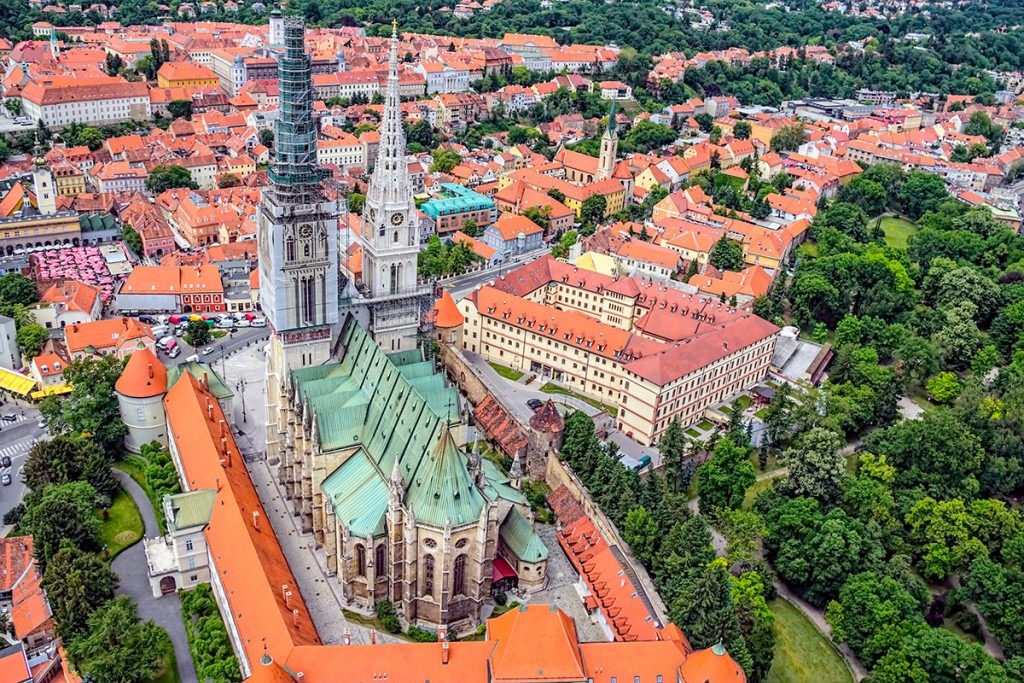
Coffee Fix in Zagreb
In the Croatian capital, Zagreb, the main sightseeing area is the medieval Gornji Grad (Upper Town) district. Here, popular tourist attractions include the cathedralwith its neo-Gothic façade, twin steeples, and treasury with its large collection of religious art and artifacts; the Croatian Parliament (Hrvatski sabor); the Church of St. Mark with its famous colored tiled roof; and the 13th-century Tower of Lotrscak, which you can climb for fantastic views over the city and the surrounding area. To experience the city’s vibrant cafe culture, grab a table on the cobbled car free Tkalciceva, with its endless streetwise cafes or on the pavement tables on Trg Petra Preradovicaor Bogoviceva.
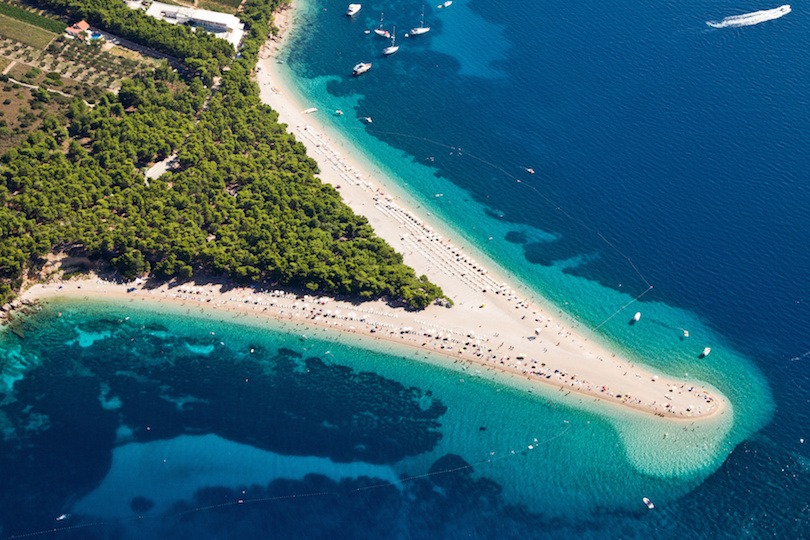
Zlatni Rat Beach, Bol
Croatia’s most photographed beach has to be the remarkable Zlatni Rat (Golden Horn, or Golden Cape). Located in Bol on the south coast of Brac, this unusual landform, known as a “spit,” is made up of fine pebbles and runs 500 meters perpendicular to the coast. Depending on local winds and currents, it moves and changes shape from season to season. This is widely considered to be one of Europe’s top beaches.
When to go & weather :
High Season : This period constitutes the peak season on the Adriatic, and this is definitely the best time to visit Croatia if busy beaches and lively café society are what you’re looking for. Croatia diverse music festival scene are in full swing by July.
Shoulder Season : The early summer months of May & June and September are perhaps the best time to visit Croatia. Sightseeing is more enjoyable and travelling between sights can be more relaxing early in the season, when there are fewer people and significantly less pressure on transport facilities.
Low Season : Mid March, April – October & mid-November : It’s naturally much quieter throughout the country during the autumn months than during the high summer season. Perhaps this is the best time to travel to Croatia to enjoy inland Istria and national park areas, like the Plitvice Lakes and the River Krka. Spring is well into its stride by mid-March. Warm, dry weather makes this a great time to go cycling, hiking or touring the cultural sights, and locals are likely to be particularly welcoming at this time of year – before the tourism season takes off again.
Fast Facts
Capital: Zagreb
Currency: Kuna. 1USD=6.38 Kuna
Language: Bosnian, Serbian
Allow us Assist to You
Quick Links
Contact Us


